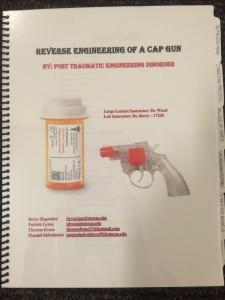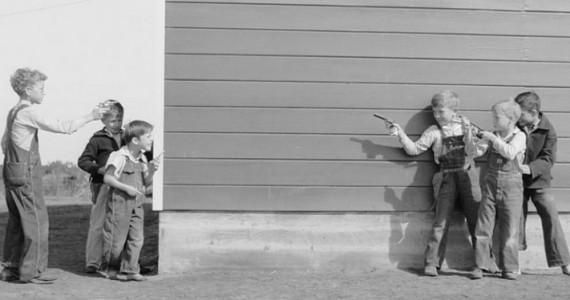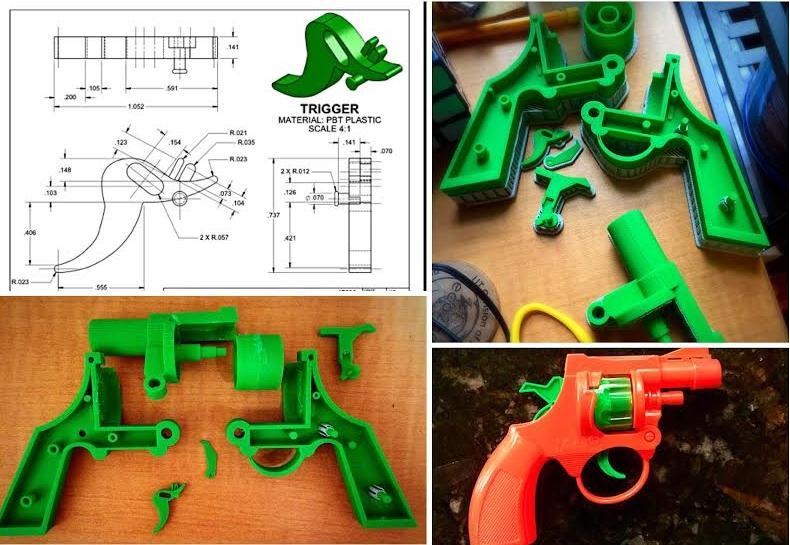 Students studying mechanical engineering at the University of Texas at Austin are required to take a course called, not surprisingly, “Introduction to Mechanical Engineering.” As part of this course, the students become familiar with SolidWorks, a 3D CAD software, developed in 1993 by MIT graduate Jon Hirschtick, that has become one of the primary pieces of software for use in 3D printing. The students then put their knowledge to use in the Maker Space located conveniently on the first floor of the mechanical engineering building.
Students studying mechanical engineering at the University of Texas at Austin are required to take a course called, not surprisingly, “Introduction to Mechanical Engineering.” As part of this course, the students become familiar with SolidWorks, a 3D CAD software, developed in 1993 by MIT graduate Jon Hirschtick, that has become one of the primary pieces of software for use in 3D printing. The students then put their knowledge to use in the Maker Space located conveniently on the first floor of the mechanical engineering building.
The first project assigned to students enrolled in the course was to reverse engineer an object of their choice. Reverse engineering is the process of looking at something already completed and working backwards in order to understand how it was created. Engineering Honors student Patrick Lyons joined with several of his classmates to reverse engineer a cap gun. The group entitled themselves “Post Traumatic Engineering Disorder” (PTED) and set about the study of their topic.
The first step was to simply dismantle the gun and study its component parts. The primary learning objective of this project was to familiarize students with the process of rapid prototyping using a pre-existing design. However, members of the PTED also took it upon themselves to engage in a certain amount of redesign. Much of the redesign was focused on the simplification of forms to ease the process of modeling and printing.
Each student in the group collected precise measurements and went to work in SolidWorks. After assigning materials to all of the parts–something made easier by the use of the program’s materials analysis function–and ensuring that they were strong enough to endure the stresses to which they would be subject, they saved the models as STL files. In addition, they created a set of precisely dimensioned drawings for each part so that the information would be readily available to anyone.
 The cap gun that they designed consisted of seven 3D printed parts. They printed their final products out from UT’s Innovation Station, essentially a double-decker MakerBot 3D printer to which prints can be sent from anywhere by anybody with a UT ID. As the goal of the project was simply to become familiar with the processes involved in 3D printing as well as the nature of reverse engineering, the printed parts were never assembled into a completed gun. Group leader Patrick Lyons was enthusiastic about both this project and the possibilities present through 3D printing technology:
The cap gun that they designed consisted of seven 3D printed parts. They printed their final products out from UT’s Innovation Station, essentially a double-decker MakerBot 3D printer to which prints can be sent from anywhere by anybody with a UT ID. As the goal of the project was simply to become familiar with the processes involved in 3D printing as well as the nature of reverse engineering, the printed parts were never assembled into a completed gun. Group leader Patrick Lyons was enthusiastic about both this project and the possibilities present through 3D printing technology:
“This was by far the coolest project I’ve ever been a part of. Seeing the end result was really amazing after so many months of planning and work. 3D printing is an incredible industry and the University of Texas at Austin is really providing the opportunities necessary for all of us to learn additive manufacturing. We don’t have plans to push this project forward or necessarily make anymore cap guns, but using the skills developed throughout this process I intend to create many more 3D prints in the coming years. I can’t wait to see what I print next!”
I have seen cap guns bring out the inner child in people of all ages and while this project is probably more complex than something that could be mastered by that inner child, the potential for play is clearly available through both the process and the product here.
 The more things change, the more they stay the same.
The more things change, the more they stay the same.
Let us know if you’ve heard of similar success in the educational field in the Reverse Engineering a Cap Gun forum thread over at 3DPB.com.
Subscribe to Our Email Newsletter
Stay up-to-date on all the latest news from the 3D printing industry and receive information and offers from third party vendors.
Print Services
Upload your 3D Models and get them printed quickly and efficiently.
You May Also Like
3D Printing News Briefs, July 2, 2025: Copper Alloys, Defense Manufacturing, & More
We’re starting off with metals in today’s 3D Printing News Briefs, as Farsoon has unveiled a large-scale AM solution for copper alloys, and Meltio used its wire-laser metal solution to...
Etsy Design Rule Change Reduces Selection of 3D Printed Goods
Online marketplace Etsy has implemented a rule change requiring all 3D printed goods on the site to be original designs. The update to the site’s Creativity Standards states, ¨Items produced using...
Siraya Tech Introduces New Elastomer 3D Printing Materials, Including Foaming TPU
California company Siraya Tech, founded in 2019 with a focus on material science, customer focus, and agility, develops high-quality 3D printing materials that meet the needs of creators, hobbyists, and...
3D Printing News Briefs, April 12, 2025: RAPID Roundup
The news from last week’s RAPID+TCT in Detroit just keeps on coming! That’s why today’s 3D Printing News Briefs is another RAPID Roundup of more exciting announcements from the trade...



































